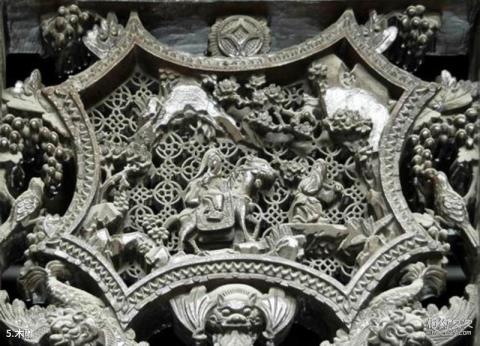
Introduction to wood carving: The wood carving industry grew with the development of hardwood (commonly known as mahogany) furniture. It is a traditional handicraft in Lingnan and gradually became prosperous in the Ming Dynasty.
Wood carvings are widely used in Chen's Academy's indoor screen door stops, niche covers, flower covers, beam frames, piers, brackets, eaves boards, bird stands, etc. Almost all wooden components on the top and bottom of the building are carved. There are countless historical stories and auspicious patterns. These wooden components integrate practical and decorative functions. They are made of large and high-quality materials, and the carvings are exquisite. The content is all-encompassing, and the patterns are complex and gorgeous, which fully demonstrates the level of wood carving technology at that time.
The four wooden carved screen doors that first enter the hall have strict, symmetrical and varied compositions and exquisite carvings. They are carved with auspicious content from top to bottom, with wonderful meanings and decorative interest; twenty doors enter in the middle. The double-sided carved screen with the theme of historical stories and folklore is known as "a corridor of historical stories carved by folk artists using wood and steel knives"; the 11 8-meter-high wooden shrine covers entering the hall behind are grand in scale. , carved with countless dragons and phoenixes, flowers, character stories, etc., it is the largest existing Qing Dynasty wood carving masterpiece in Guangdong.
